March 4, 2021, by Kathryn Steenson
World Book Day 2021
Happy World Book Day! None of the staff here fancied dressing up (we can’t all wear a dressing gown and pretend to be Arthur Dent) so instead we’ve picked out a few of our favourite books from our collections.
Abigail (Document Production Assistant) chose what we refer to as the Poisons Scrapbooks: a set of over 30 volumes with ornate gold detailing and handwritten labels on the spines (ref: ‘The Poison Cases’, Med-Chi Collection Oversize, QV600 POI). Inside are British newspaper clippings relating to poisonings from 1910s to the 1960s. Accidents, murders and suicides, it’s all here. So why is something as macabre as this her favourite?
“They’ve been faithfully compiled by someone over fifty years. There’s a mystery surrounding who made these scrapbooks, what sort of person would go to these lengths the lengths?”
You can read more about these in our September 2017 newsletter.
Library Assistant Nick’s favourite is the equally odd but more cheerful book The Works of Ambrose Parey from 1691 (ref: Med-Chi Collection Oversize WZ240.P25). It’s also in our medical collections, but it’s not the human medical (mis)information that caught his attention.
“This book collects together Parey’s writings about human biology, anatomy, and the natural world, complete with strange, rather haunting woodcut illustrations. There’s a chapter called “Of monsters and prodigies” which details the strange beasts he has seen or been told about. Some – like the giraffe and rhinoceros – are very familiar to us, now. But others, such as the sea creature “with the head, mane and breast of a horse, and the rest of his body like a fish” which was captured, “brought to Rome, and presented to the Pope”, represent the wonder and magic of the 17th century Europe-centric world, where knowledge was limited and literally any creature imaginable could exist out there somewhere.”.
Archives Assistant Jayne’s graphic design skills influenced her choice of J. Potter and W.T. Pike’s 1901 book Nottinghamshire and Derbyshire at the opening of the twentieth century; contemporary biographies (ref: East Midlands Collection Oversize Em.V32 BRI).
“I like this weighty tome not just for its fascinating content but also for its looks – the heavy-weight paper, the gold-edged pages, the decoration on the cover. This book wants to impress. Inside there are around 700 illustrated biographies of the great and the good – the nobility and gentry, clergy, doctors, business moguls, lawyers, veterinary surgeons, along with pictures of their impressive homes (something I find particularly interesting). The photographs of these men (sorry, there are no women) are so atmospheric they really bring the volume to life. And if nothing else, they demonstrate how important it was to have impressive facial hair at the turn of the twentieth century!”
Archivist Sarah picked a book that she got to know well when co-curating the exhibition Collected Words. B S Johnson’s 1969 experimental novel The Unfortunates, about a football reporter’s friendship with a University student that was tragically and prematurely ended by death, is set in Nottingham. It’s made up of 27 unbound sections. The first and last chapter are specified but the remainder can be read in any order.
You can watch a short video Sarah made explaining why this novel that few people have heard of is so special. She’s not alone: Nottingham City of Literature selected it for a mass public reading at locations around the city back in 2019.
Finally Hayley (Senior Archivist) chose The History of Magic by Joseph Ennemoser, translated from the German by William Howitt and edited by Mary Howitt.
“Before Professor Binns was around to teach the history of magic we had Joseph Ennemoser, a Tyrolean doctor and scientist. His two volume work looks at different phenomena, his belief in animal magnetism, and scientific explanations for apparently supernatural events. The real reason that I love this book though is for the appendix added by Mary Howitt ‘of the most remarkable and best authenticated stories of apparitions, dreams, second sight, somnambulism, predictions, witchcraft, vampires [and] fairies…’. Who could resist?”
Yes, long before Professor Binns – about 143 years in fact, as this copy of The History of Magic was published in 1854.
All these books are available to view in the Reading Room at King’s Meadow Campus. We’re currently open for University of Nottingham staff and students and will reopen to the public when the lockdown is lifted. Please see our homepage for the latest opening hours and restrictions. In the meantime, our copying and enquiry services are running as normal.
No comments yet, fill out a comment to be the first

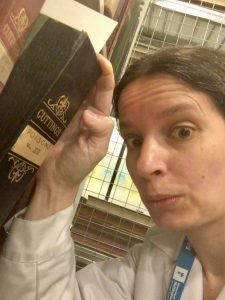
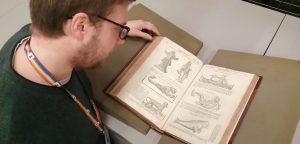
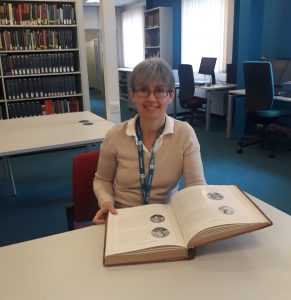
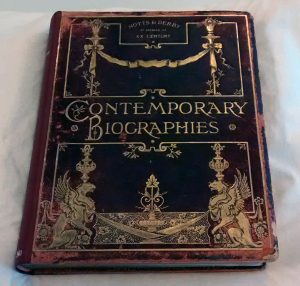

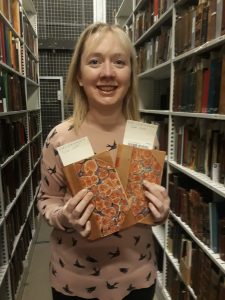
Leave a Reply